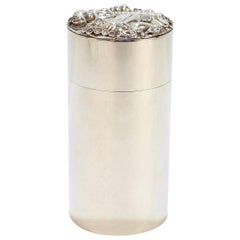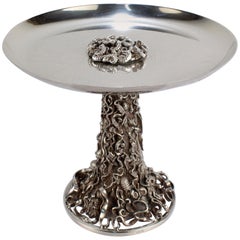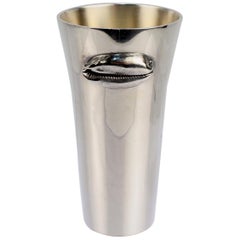Jocelyn Burton
Vintage 1970s British Modern Boxes and Cases
Moonstone, Sterling Silver
20th Century British Modern Centerpieces and Tazzas
Sterling Silver
20th Century British Modern Barware
Sterling Silver
People Also Browsed
21st Century and Contemporary Drop Necklaces
Diamond, 18k Gold
Early 20th Century French Belle Époque More Jewelry
Diamond, Platinum
20th Century French Artist Vanity Items
Ruby, Sapphire, 18k Gold, Gold
Antique Late 19th Century British Enamel Frames and Objects
White Diamond, 18k Gold, Silver
21st Century and Contemporary Italian Baroque More Jewelry
Diamond, Pearl, Gold, White Gold
Vintage 1970s French Desk Accessories
Ruby, Gold, 14k Gold
Mid-20th Century French Artist Boxes and Cases
Diamond, Yellow Gold
Vintage 1960s Italian Retro Vanity Items
Diamond, Yellow Gold
Vintage 1960s French Desk Accessories
18k Gold
Read More
Joan Mitchell’s Rare, Late-Career Diptych Buzzes with Life
Beneath the inky blackness, the painter’s irrepressible energy electrifies this pair of intaglio prints.
39 Incredible Swimming Pools
It's hard to resist the allure of a beautiful pool. So, go ahead and daydream about whiling away your summer in paradise.
The 21 Most Popular Mid-Century Modern Chairs
You know the designs, now get the stories about how they came to be.
Why Is Italy Such a Hotbed of Cool Design?
Patrizio Chiarparini of Brooklyn’s Duplex gallery sheds light on the lasting legacy of Italy’s postwar furniture boom.
Eileen Gray’s Famed Cliffside Villa in the South of France Is Returned to Its Modernist Glory
After years of diligent restoration, E-1027, the designer-cum-architect’s marriage of romance and modernism, is finally complete.
12 Calming Spaces Inspired by Japanese Design
From cherry-blossom-adorned walls paired with glamorous lighting to wood-paneled ceilings above checkerboard-patterned chairs, these 12 spaces seamlessly blend Eastern and Western aesthetics.
Eileen Gray’s Deco Designs Launched Modernism. That Was Just the Beginning
Decades after her death, appreciation for the legendary designer and architect's work continues to flourish.
Harvey Probber Was the Godfather of Modern Modular Seating
The forward-thinking designer is finally getting his due.


